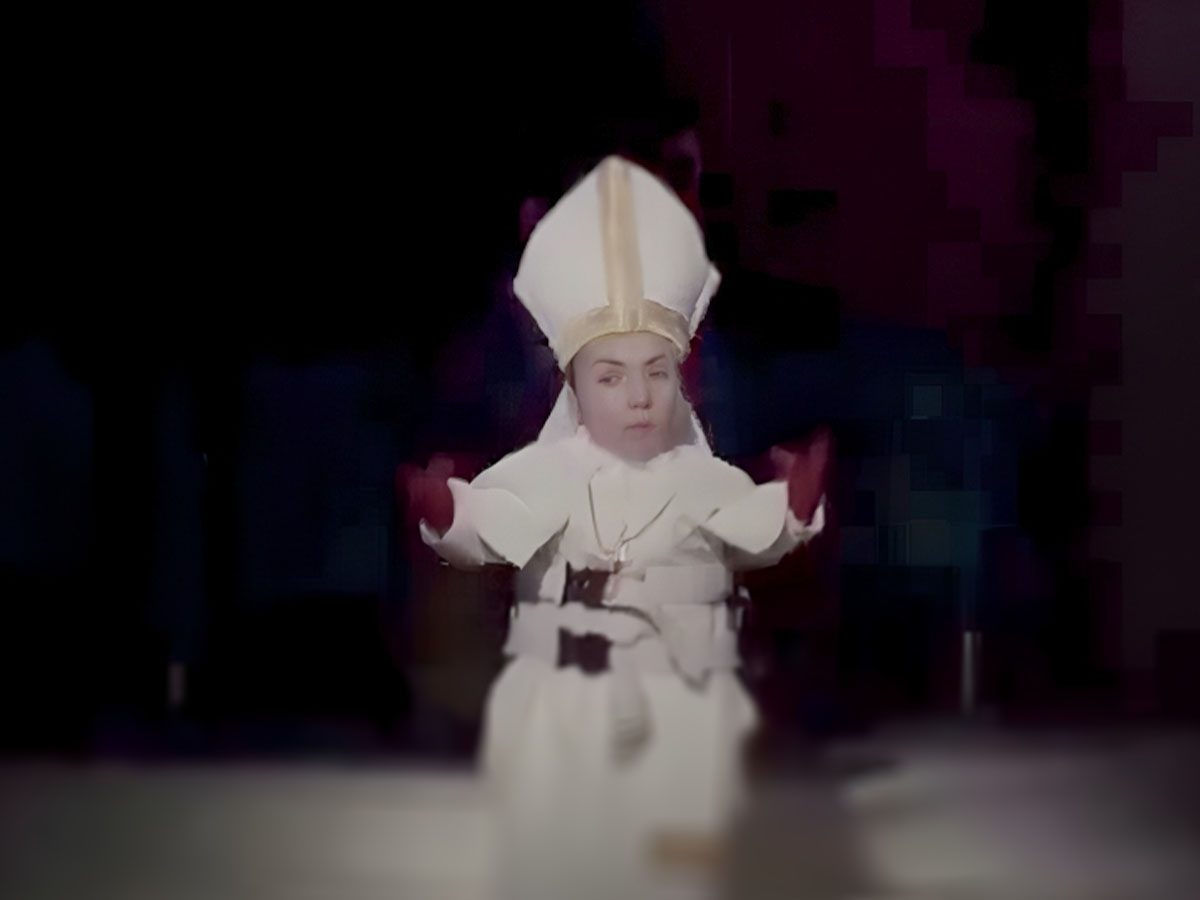
Warning: Summations of graphic scenes that may be uncomfortable for some readers. Some links may lead to articles with images that readers could find unsettling and explicit.
A graphic, blasphemous German opera has left 18 audience members in need of medical attention. Written originally in 1921 by composer Paul Hindemith, Sancta Susanna was originally banned as too blasphemous. It is now being rekindled as a graphic, radical feminist opera that is pushing extreme boundaries of what is art and what is simply for shock value. The opera is restricted to audience members 18 years and older and follows Susanna, a nun who has a sexual awakening. The show’s closing climax occurs when Susanna performs sexual acts with an icon of Jesus Christ. The show features an all-female cast and features such shocking imagery as explicit lesbian love scenes, naked roller-skating nuns, real blood from actual wounds, crucifixions, and a woman with dwarfism dressed as the Pope.
The scenes were so graphic in nature, that the opera’s first two performances at the Stuttgart Opera involved 18 people needing medical attention for shock and nausea, with a doctor being called three times. The choreographer behind the stunts is Florentina Holzinger, who was baptized into the Roman Catholic church but “formally left the Catholic [C]hurch as a young adult ‘to avoid paying tax.’” Holzinger said she wants to “We want to seduce our audience into thoughtfulness.” When asked if the graphic nature of the opera was necessary, the Stuttgart Opera responded, “Things have been different for decades in performance art: here the person performing does not embody a character, here the body itself is the medium – and in Florentina Holzinger’s work in particular, natural nudity is a very central means of expression.”
Naturally, the show has received a lot of criticism, particularly for its anti-Catholic imagery. Archbishop Franz Lackner stated the show was “seriously offending believers.” “Sickening,” wrote commentator Ian Miles Cheong on X. “This is a performance of the avant-garde opera “Saint Susanna,” which included provocative scenes such as lesbian encounters, the use of real blood, depictions of harm, and nuns on roller skates without clothing.” One commentator responded, “That’s not art, that’s shock for shock’s sake. Pushing boundaries should have meaning, not just be a spectacle.” Another responded writing, “It’s blasphemous. Designed to be blasphemous by satanic minds. The last wheezing gasps of a dying, diseased culture.”


